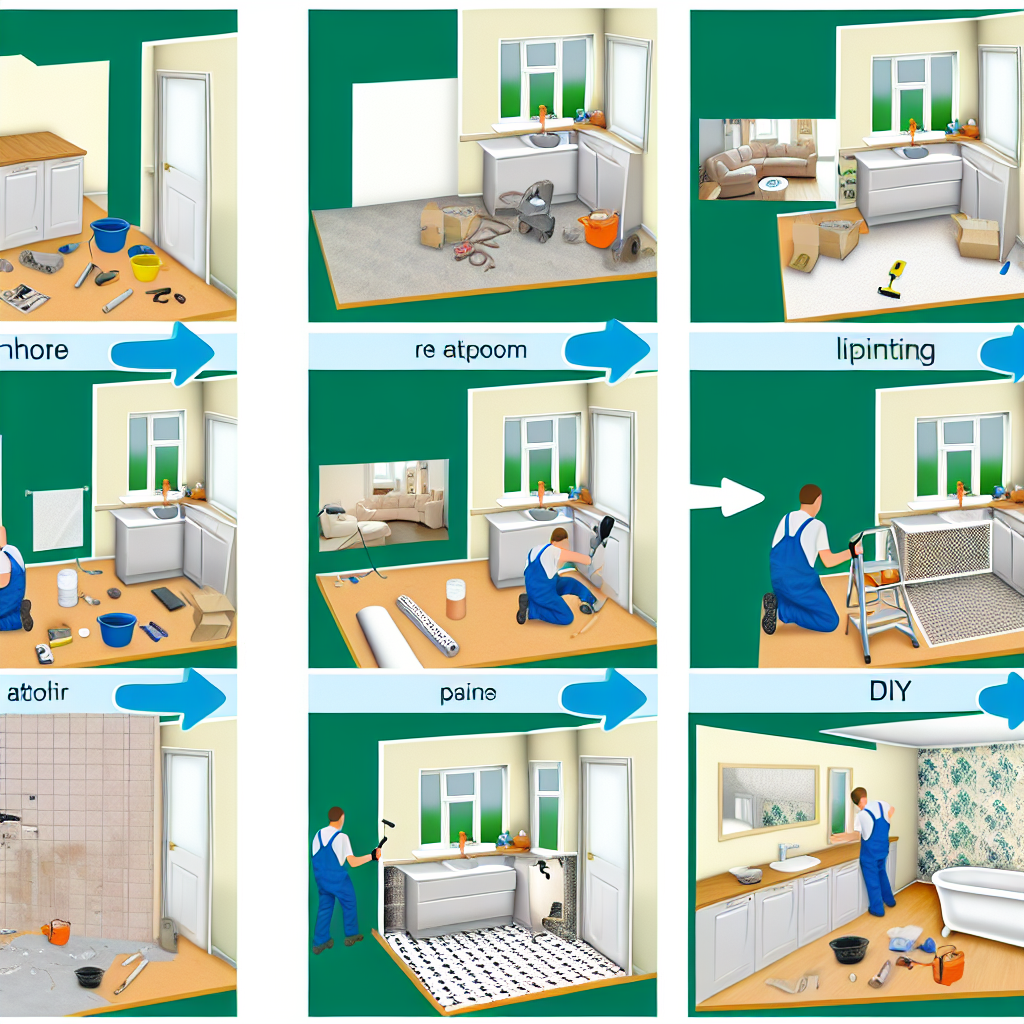DIY Home Renovation: A Step-by-Step Guide to Transform Your Living Space on a Budget
- Introduction
- Planning Your DIY Home Renovation
- Step-by-Step Guide to DIY Renovation
- Statistical Data
- Common Mistakes and How to Avoid Them
- Expert Tips and Recommendations
- Frequently Asked Questions
- Conclusion
Are you thinking about breathing new life into your home without breaking the bank? Whether youre a DIY enthusiast or a first-time renovator, transforming your living space can be quite an adventure. The good news is that with the right home renovation tips and budget-friendly ideas, you can achieve stunning results. Read on, and well guide you through the entire process of DIY home renovation, ensuring you stay within budget and make the most out of your efforts.
Planning Your DIY Home Renovation

Setting a Budget
Setting a realistic budget is the first step in any home renovation project. Did you know that the average cost of a home renovation can vary widely based on location and project scope? For example, minor bathroom remodels cost around $10,000 (USD), while major kitchen remodels can exceed $60,000 (USD). Keeping track of your expenses and setting clear financial limits will help you avoid financial stress and ensure that your DIY home renovation stays on track.
Choosing Your Projects Wisely
Not every renovation project will add the same value to your home. Consider the projects that offer the highest return on investment and improve daily living. According to a recent survey, kitchen and bathroom remodels are among the top home improvements that increase property value. Prioritize your projects and make informed decisions to maximize your renovation efforts.
Step-by-Step Guide to DIY Renovation
Initial Preparations
The preparation phase involves gathering all the necessary tools and materials, creating a timeline, and securing any required permits. Preparation might seem tedious, but it’s essential to ensure a smooth renovation process. Make a comprehensive list of everything you need and double-check your plans.
Demolition Day
Demolition is one of the most labor-intensive parts of any home renovation project. Make sure to wear appropriate safety gear and dispose of debris responsibly. Working in sections can help keep the process manageable. Remember, every successful demo paves the way for a beautiful transformation!
Construction and Repair
Once the demolition is complete, it’s time to start the construction and repair phase. This includes tasks like framing, plumbing, electrical work, and drywall installation. Take your time with this step, as strong fundamentals are crucial for a long-lasting renovation.
Finishing Touches
The final step is all about adding the finishing touches to your DIY home renovation. This includes painting, installing fixtures, and adding decor. The finishing touches bring your vision to life and give your home that brand-new feel. Take your time selecting colors and materials that align with your desired aesthetic.
Statistical Data
| Home Renovation Project | Average Cost (USD) |
|---|---|
| Minor Bathroom Remodel | $10,000 |
| Major Kitchen Remodel | $60,000 |
| Living Room Makeover | $15,000 |
| Roof Replacement | $20,000 |
| Window Replacement | $8,000 |
| Hardwood Floor Installation | $9,000 |
| Siding Replacement | $15,000 |
| Attic Conversion | $25,000 |
| Basement Remodel | $18,000 |
| Deck Addition | $12,000 |
Common Mistakes and How to Avoid Them
Einstein once said,"Anyone who has never made a mistake has never tried anything new." When it comes to DIY home renovation, mistakes are bound to happen. However, learning from common mistakes can save you time and money. Here are a few to watch out for:
- Overestimating Skills: Evaluate your skill level honestly. Tackling complex projects like electrical or plumbing without the necessary expertise can lead to disasters.
- Ignoring Permits: Failing to get proper permits can result in fines and complications when selling your home.
- Underestimating Costs: Always budget for unexpected expenses. A rule of thumb is to add 10-20% to your estimated costs as a buffer.
- Choosing Trendy Over Timeless: While trendy designs can be appealing, they may not stand the test of time. Opt for classic styles that offer longevity.
Expert Tips and Recommendations
Renovation experts like Bob Vila emphasize the importance of planning and preparation. Vila suggests creating a detailed plan and sticking to it while being flexible enough to adapt when unexpected challenges arise. Additionally, investing in high-quality tools and materials can make a significant difference in the project outcome.
Frequently Asked Questions
- What is the average cost of a DIY home renovation?
The average cost varies depending on the projects scope and location. However, a general range for a comprehensive renovation can be from $10,000 to $100,000.
- Can I renovate my home on a tight budget?
Absolutely, budget home renovation is achievable with careful planning and prioritization. Focus on high-impact changes that cost less, such as painting and updating fixtures.
- What are some affordable home renovation ideas?
Some budget-friendly home renovation ideas include repainting walls, updating kitchen cabinets, installing new light fixtures, and adding crown molding.
- Do I need permits for DIY home renovations?
Permit requirements vary by location and the projects nature. Check with your local building department to determine whether your renovation needs permits.
- How can I avoid common renovation mistakes?
Avoid overestimating your skills, failing to get permits, underestimating costs, and choosing trendy designs that may not last.
DIY home renovation can be a rewarding and cost-effective way to enhance your living space. By planning meticulously, setting a realistic budget, and following expert advice, you can transform your home without breaking the bank. Remember, the key to success lies in the details, so take your time to ensure every step is well-executed.